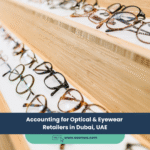Accounting for Pest Control Services in Dubai, UAE
The pest control industry is an essential service in Dubai, protecting homes and businesses from health and safety risks. While the service appears straightforward—inspect, treat, and prevent—the business operations behind it are financially complex. A pest control business is a unique blend of a service-based company, a chemical trading business, and a logistics operation.
Profitability in this competitive market depends on precise financial management. How do you account for the cost of chemicals used on each job? How do you recognize revenue from a client who pays for an entire year of service upfront? How do you track the true cost of your vehicle fleet, your most critical operational asset? Inaccurate accounting in these areas can lead to poor job costing, cash flow crises, and serious compliance issues with UAE law.
This guide provides a detailed operational manual for Accounting for Pest Control Services in Dubai. We will examine the core financial challenges of the industry, from managing chemical and equipment inventory and tracking annual contracts to costing vehicle fleets and navigating UAE tax laws.
Key Takeaways
- Inventory is a Key Cost: The cost of chemicals and disposable equipment used on a job is a primary component of your Cost of Goods Sold (COGS). Accurate tracking is essential for job profitability analysis.
- Annual Contracts are Liabilities First: Upfront payments for annual maintenance contracts (AMCs) must be recorded as “Deferred Revenue” (a liability) and recognized as revenue monthly as the service is delivered.
- Fleet Costs are a Major Expense: You must meticulously track all vehicle-related costs—fuel, maintenance, insurance, depreciation—to understand your true operational cost base.
- Job Costing is Paramount: To ensure profitability, you must be able to calculate the total cost of each job, including technician time, chemicals used, and an allocation of vehicle costs.
- Tax Compliance is Non-Negotiable: Pest control services are subject to 5% VAT, and the business must comply with the 9% UAE Corporate Tax, requiring accurate and detailed financial records.
The Financial Anatomy of a Pest Control Business
A pest control company’s financial success is driven by its operational efficiency. Every service call involves direct costs (technician salary, chemicals) and indirect costs (vehicle depreciation, insurance). Without a robust accounting system to capture and allocate these costs correctly, a business cannot know which contracts are profitable and which are not. This is where specialized accounting and bookkeeping services become a critical tool for success.
Core Accounting Principles for Pest Control Services
Eradicating financial pests requires focusing on three key areas: inventory, contracts, and fleet management.
1. Chemical and Equipment Inventory
Your inventory is a mix of consumable goods and long-term assets.
- Chemicals & Consumables: Pesticides, rodenticides, traps, and disposable safety gear are your inventory. Their cost is recorded as part of the Cost of Goods Sold (COGS) when they are used on a job. It is vital to have a system to track usage per job.
- Equipment: Sprayers, foggers, and diagnostic tools are fixed assets. They should be capitalized on your balance sheet and depreciated over their useful life. Their depreciation is an operating expense.
- Expiry and Disposal: Many chemicals have expiry dates. You must have a process to write off the cost of expired chemicals. The cost of specialized disposal for hazardous materials is also an operating expense that must be tracked. An internal audit can help ensure your inventory controls are effective.
In pest control, your chemical inventory is a direct cost of sale. If you can’t measure what you use on each job, you can’t measure your profit.
2. Tracking Annual Maintenance Contracts (AMCs)
Annual contracts are excellent for cash flow but require specific revenue recognition accounting.
- Deferred Revenue is Key: When a client pays AED 2,400 for a one-year contract, you cannot book all of it as revenue in the first month. The full amount is recorded as a liability called “Deferred Revenue.”
- Monthly Recognition: Each month, as you provide the service, you move a portion of that liability to revenue. In the AED 2,400 example, you would recognize AED 200 as revenue each month for 12 months. This adheres to the accrual basis of accounting.
- Managing Receivables: For clients who pay quarterly or monthly, a strong accounts receivable process is essential to ensure timely payments and maintain healthy cash flow.
3. Costing for Vehicle Fleets
Your fleet of vehicles is the backbone of your operation and one of your largest cost centers.
- Track All Costs: You must track every cost associated with your fleet: vehicle purchase (which is depreciated), fuel, maintenance, insurance, registration (Salik and Darb), and repairs.
- Cost Allocation: To truly understand job profitability, you can develop a “cost per kilometer” or “cost per hour” for your fleet and allocate this cost to each job based on the travel required.
- Payroll Integration: The salaries of your technicians are a major cost. An efficient payroll service ensures they are paid accurately and that their costs are correctly allocated to service jobs.
| Financial Item | Description | Accounting Treatment |
|---|---|---|
| Annual Contract Prepayment | A client pays AED 3,600 for a one-year service contract. | Record as Cash and a corresponding liability (Deferred Revenue). Recognize AED 300 as revenue each month. |
| Chemicals for a Job | AED 100 worth of insecticide used at a villa. | Record as Cost of Goods Sold for that specific job, reducing your inventory value. |
| Vehicle Engine Repair | A major, unexpected engine repair costing AED 5,000. | Record as “Repair & Maintenance Expense” in the period it occurs. It is not capitalized. |
| Purchase of a New Sprayer | A durable, high-end sprayer costing AED 2,000. | Capitalize as a Fixed Asset and depreciate it over its useful life. |
Navigating UAE Tax and Compliance
Pest control is a regulated service industry with clear tax obligations. For the most accurate information, always consult the official Federal Tax Authority (FTA) website.
VAT on Pest Control Services
Pest control services are subject to the standard 5% VAT rate in the UAE. You must issue valid tax invoices for all your services and file your VAT returns on time. Proper VAT return filing is crucial to avoid penalties.
UAE Corporate Tax
Your business is subject to the 9% UAE Corporate Tax on its taxable income over AED 375,000. Your net profit is directly impacted by how you account for deferred revenue, inventory costs, and fleet expenses. Maintaining accurate, detailed records is a legal requirement and essential for tax planning. Engaging with professional corporate tax services is highly recommended.
What Excellence Accounting Services (EAS) Can Offer
Managing the finances of a service-based, logistics-heavy business like pest control requires specialized systems. At Excellence Accounting Services, we provide targeted solutions to help you succeed.
- Job Costing & Profitability Analysis: We help you implement systems to track the true cost of each job, allowing you to price your services effectively and maximize profits.
- Revenue Recognition for Contracts: Our team ensures your revenue from AMCs is recognized correctly, providing accurate financial statements and maintaining compliance.
- Expense Management: We provide expert financial reporting that gives you clear visibility on your major cost centers, especially your vehicle fleet.
- VAT & Tax Compliance: Our VAT consultants ensure you are fully compliant with all FTA regulations, from registration to filing.
- Business Advisory: Beyond numbers, our business consultancy services can help you analyze your operations for greater efficiency and growth.
Frequently Asked Questions (FAQs)
This is a warranty or callback cost. You should estimate the likely cost of these callbacks based on historical data (e.g., 2% of contracts require a callback at an average cost of AED 150). You would then create a “Provision for Warranty Services” liability and record a corresponding expense when the initial sale is made. The cost of the actual callback (technician time, chemicals) is then deducted from this provision.
If the initial service is significantly more substantial, you should allocate the annual contract fee accordingly. For example, if a AED 2,400 contract includes a major first visit worth AED 600 and 11 monthly visits worth AED 163 each, you would recognize AED 600 in revenue in the first month and AED 163 in the subsequent months. This better matches revenue to the effort expended.
No. The salaries and commissions of your sales team are a “Selling, General & Administrative” (SG&A) expense, not a Cost of Goods Sold. COGS includes only the direct costs of delivering the service, such as the technician’s time on-site and the chemicals used.
The cost of the chemicals themselves should be written off from inventory and recorded as a “Spoilage Expense.” The additional fees paid to a specialized waste management company for their safe disposal are recorded as an “Operating Expense,” for example, under “Hazardous Waste Disposal.”
You record the revenue at the final discounted price. The discount itself reduces the total revenue you book from the contract. It’s important to track these discounts in your accounting system to analyze their impact on overall profitability.
This is a major financial decision. Buying (a capital expenditure) means you own the asset, but it requires high upfront cash. You record depreciation expense. Leasing (an operating expense) has lower upfront costs but you don’t own the asset. A detailed feasibility study comparing the total cost of ownership versus leasing over the vehicle’s life is essential to make the right choice.
A simple but effective method is to use a job sheet for each service call. The technician records the start and end quantity of the main chemicals used from their vehicle stock. These sheets are then used to update the central inventory records and to charge the cost to the specific job in your accounting system.
The amount owed is in your accounts receivable. If, after all efforts, you determine the amount is uncollectible, you must write it off. This is recorded as a “Bad Debt Expense” on your income statement, which reduces your profit.
It depends. If the setup fee is for a distinct, upfront service (e.g., a deep inspection and installation of permanent traps), it can be recognized as revenue immediately. If it’s simply a fee to initiate a long-term contract and has no separate service attached, it should be deferred and recognized as revenue over the life of the contract.
Your financial data is key. By analyzing reports on technician utilization, revenue per vehicle, and total operating cost per vehicle, you can determine if your current fleet is operating at maximum capacity. If demand is high and your fleet’s profitability is strong, the financial data will support the decision to invest in new vehicles.
Conclusion: Exterminating Financial Uncertainty
In the pest control industry, the threats to your business are not just crawling in the walls; they can hide in your financial statements. A lack of clarity on job costs, improper revenue recognition, and poor expense tracking can quickly erode your profits. By implementing a robust accounting framework that provides clear visibility into every aspect of your operations, you can ensure your business remains healthy, compliant, and profitable for years to come.
Protect Your Profits.
Let Excellence Accounting Services help you implement the specialized accounting systems your pest control business needs to manage costs, maximize cash flow, and grow.




